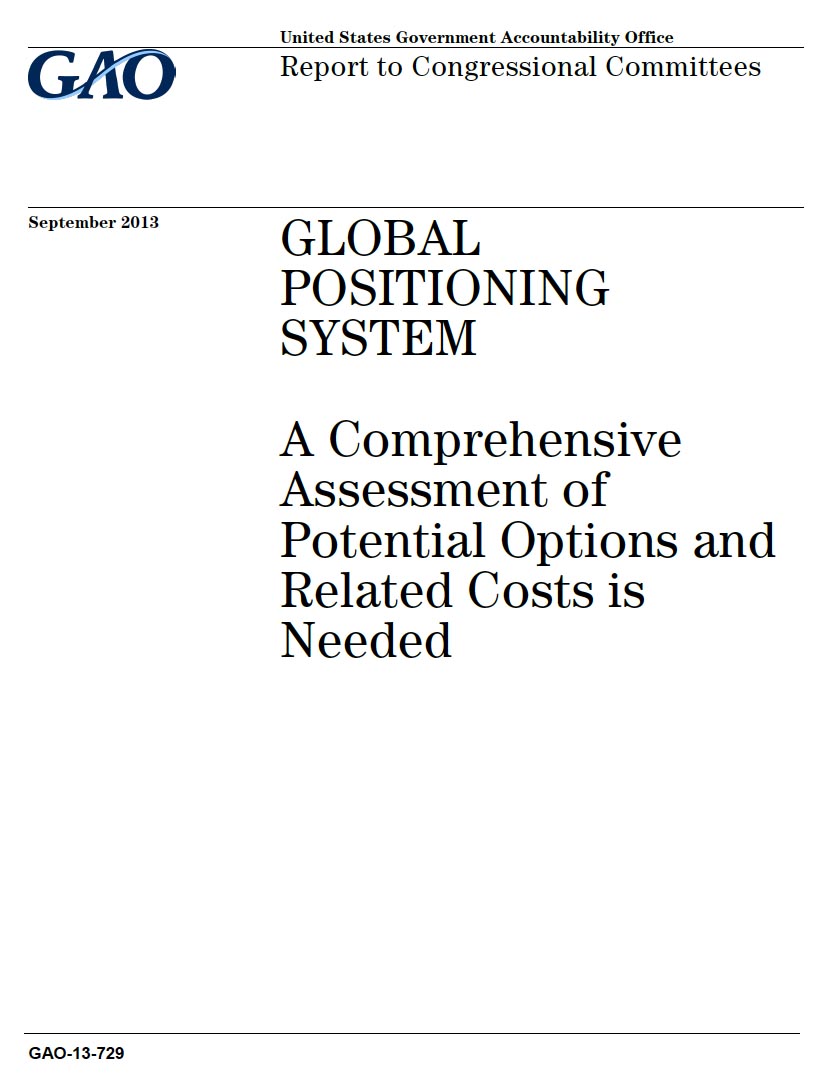
Air Force officials should get more cost and user information and determine how many GPS satellites they will support before making decisions about revamping the navigation system, the Government Accountability Office (GAO) has told Congress.
Although an Air Force report about program options was “a good starting point, more information on key cost drivers and cost estimates, and broader input from stakeholders would help guide future investment decisions,” the GAO wrote in an assessment of the defense agency’s analysis.
Air Force officials should get more cost and user information and determine how many GPS satellites they will support before making decisions about revamping the navigation system, the Government Accountability Office (GAO) has told Congress.
Although an Air Force report about program options was “a good starting point, more information on key cost drivers and cost estimates, and broader input from stakeholders would help guide future investment decisions,” the GAO wrote in an assessment of the defense agency’s analysis.
The watchdog agency weighed cost estimates for various GPS architectures submitted by the Air Force to Congress earlier this year. In the report, Lower Cost Solutions for Providing Global Positioning System Capability, Air Force officials looked at emerging technologies and different constellation structures as a way to reduce expenses.
The House Armed Services Committee had requested the report in light of the nation’s “constrained budget environment.” The House committee also directed GAO to review the report. The GAO released Global Positioning System: A Comprehensive Assessment of Potential Options and Related Costs is Needed on September 9.
Among the elements that need additional research are user equipment, the ground system, and the needs of civil users, said GAO. “Consequently, without conducting a more comprehensive assessment that addresses each of these concerns, the Air Force is not yet in a position to make sound future GPS investments.”
GAO recommended that the Air Force: (1) affirm the future size of the GPS constellation it plans to support, ensure future assessments are comprehensive and include cost risk and the impact of options on all three GPS segments, and engage the broader stakeholder community in future assessments of options. The Department of Defense concurred with these recommendations.
One of the key issues that needs to be resolved is the size of the constellation the Air Force is willing to support, GAO said.
Defense officials had examined nine constellation designs, including a continuation of the GPS III program, a combination of GPS III and smaller navigation satellites or NavSats, an all-NavSat constellation, or a constellation that put positioning, navigation, and timing (PNT) payloads on spacecraft in higher orbits or as hosted payloads on other satellites. The estimated cost for the options ranged from $13 billion to $25 billion for fiscal years 2013 through 2030.
Some of the designs incorporated dual launch (where at least two satellites are launched at a time) and others assumed that the currently required Nuclear Detection Payload would be dropped from the GPS satellites. All of the constellation designs, however, had at least 30 satellites — an approach with which the GAO took issue.
“The (Air Force) report assessed each option based on a constellation or collection of 30 total satellites instead of 24, which is the Air Force’s baseline GPS requirement for accuracy,” the GAO wrote. “This increase in total satellites raises an issue with the constellation size the Air Force intends to support in the future.”
The Air Force said in Lower Cost Solutions that its focus on 30-satellite constellations was “driven by recent modern warfare experiences where a significant amount of combat is occurring in urban and mountainous regions.” While noting the current defense requirement is a 24-satellite constellation, defense officials showed that a jump to 30 satellites increased accuracy markedly — with a sharp improvement in cases where users have a masking angle of 20 degrees — that is they cannot see satellites that are below 20 degrees above the horizon.
“There’s a definite a knee in the curve,” confirmed Brad Parkinson, vice-chairman of the National Space-Based Positioning, Navigation, and Timing (PNT) Advisory Board. “If you are talking a masking angle of 15 to 20 degrees, which isn’t an unreasonable masking angle, you can just see tremendous help from having that number of satellites.”
While acknowledging the case in favor of an architecture comprising 30 spacecraft, the GAO said GPS program officials acknowledged a reluctance to formally expand the constellation “without the certainty of a corresponding growth in program funding.” Given the uncertainty around the amount of money available for the GPS program, “the DOD and civilian agency community would benefit from knowing which constellation size the Air Force is committed to supporting.”
“The Air Force is not currently working to expand the GPS constellation beyond the current requirement for 24 satellites,” Air Force spokeswoman Major Mary Danner-Jones told Inside GNSS in an emailed statement. Although the Air Force is committed to meeting Title 10 requirement, as defined in GPS Standard Positioning Service Performance Standard, for the baseline GPS satellite constellation requirement of 95 percent functional availability of a 24-satellite constellation, Danner-Jones said, “The actual number of satellites required on orbit to meet all GPS requirements depends on a number of factors such as satellite age, how the satellites are deployed in the constellation, and the expected schedule for future satellite launches.”
Danner-Jones added that while the Air Force will not be revising its report, it “concurs” with GAO’s recommendations and would address its comments.
“The Air Force continues to assess a wide range of options that would reduce GPS total ownership cost to the U.S. government while maintaining a needed level of position, navigation, and timing (PNT) capabilities for the benefit of military and civilian users,” she said.
Heather Hennessey, who represents a large number of civil users as executive director for legislative affairs at the GPS Innovation Alliance, said her group recognizes “that federal budget constraints are causing important conversations to take place as policy makers evaluate how to provide critical functions using less money.”
“The GPS Innovation Alliance appreciates the GAO report’s recognition that the military’s decisions regarding GPS infrastructure will have broad implications beyond the Department of Defense,” said Hennessey. “Our member companies and affiliates value our working relationship with all stakeholders and stand ready to continue our ongoing collaboration.”





